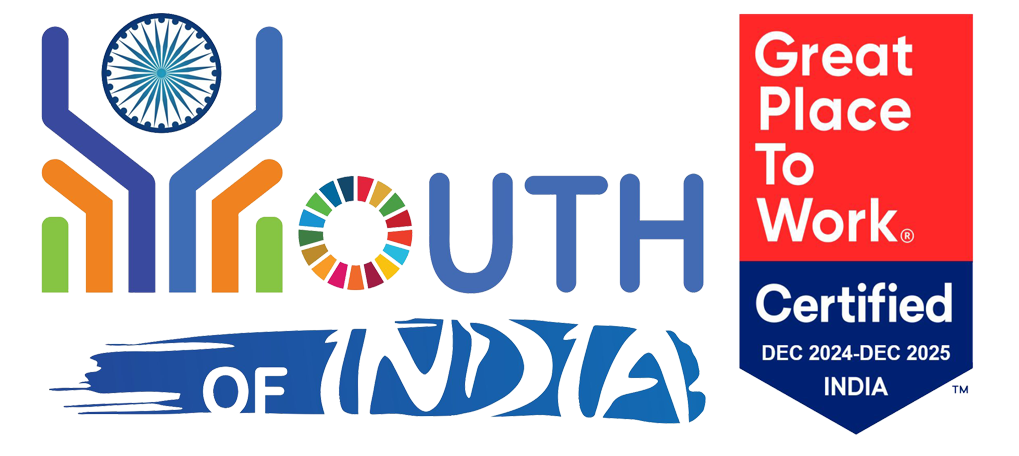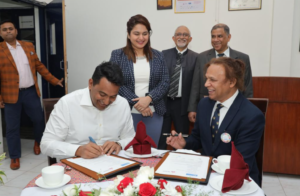Youth For Green Hydrogen appoints Namuna Sharma as Youth4GH2 Advocate in Nepal
To support the global energy transition agenda and mainstream the Green Hydrogen, the Youth For Green Hydrogen is localising its initiatives by appointing Advocates and Ambassadors across the globe in strengthening the local and regional chapter in the region. The objective of such chapters is to introduce the Green Hydrogen discourse to the public through an intergenerational perspective; raise awareness about opportunities available for the youth in leading Green Hydrogen; bring the leadership of women, girls and marginalized communities on Climate Action and accelerate the youth solutions for climate action.
To achieve the Sustainable Development Goals (SDGs), the world needs to leverage the full potential of all generations. Partnerships across generations is key for sustainable development. We must collaborate to foster successful and equitable intergenerational relations and partnerships to ensure “no one is left behind.”
The number of youth between the ages of 15 and 24 is 1.1 billion; youth constitute 18 percent of the global population. Youth and children together, including all those aged 24 years and younger, account for nearly 40 percent of the world’s population. The number of youth in the world is projected to grow by 7 percent to 1.3 billion by 2030, the target date for achieving the Sustainable Development Goals (SDGs). Around 2065, the world’s youth population is projected to reach its peak, at just under 1.4 billion persons (13%). The share of youth in the total population peaked at 19.3 percent in 1985. In 2019, Central and Southern Asia was home to the largest number of youth (361 million), followed by Eastern and South-Eastern Asia (307 million) and sub-Saharan Africa (211 million). In the 47 least developed countries, the youth population is projected to increase by 62 percent over the next three decades, rising from 207 million in 2019 to 336 million in 2050. The largest increases are expected in sub-Saharan Africa (+89%), Oceania3 (+38%) and Northern Africa and Western Asia (+28%)
Young leaders from around the world issued a clear call to action to reset the energy transition, and they urged more young people to join them in demanding bolder clean energy and climate progress. Inequalities and discrimination faced by young people in the renewable energy workforce prevent too many of them from realizing their full potential as agents of change. This means that the sector is missing out on benefiting from an entire talent pool. To unlock jobs and economic opportunities in the renewable energy sector, young people need a formal seat at the energy transition decision-making table. Inclusion of young people in the energy transition will not be achieved through a “business as usual approach”. There are serious intersectional equity concerns that need to be addressed in the energy industry at large as we work to change the system. “The clean energy economy workforce is older, dominated by male workers, and lacks racial diversity when compared to all occupations nationally,” states a recent Brookings Institute report.
The United Nations’ Marrakech Partnership’s Energy Pathway foresees 500-800 gigawatts (GW) of green hydrogen electrolysis deployment by 2030, consistent with the International Energy Agency’s (IEA) recent Net Zero 2050 scenario.
The growth in renewable investment calls for youth engagement, access to finance, skills and education that would promote innovation and governance in the sector. According to the International Renewable Energy Agency (IRENA), the off-grid value chain alone, including sales, marketing, installation and services, could create at least 4.5 million jobs globally by2030 and the Global energy investment is set to increase by 8% in 2022 to reach USD 2.4 trillion.
Role of Nepal in Green Hydrogen
The government looks forward to generating hydrogen-based electricity generation plants in collaboration with the private sector at a time when the country is facing overburdening expenses to import petroleum products. The government is in discussion with foreign organizations to install a 100 MW green hydrogen plant in the next one and a half years. Nepal has a high potential to produce hydrogen-based electricity as the country has plenty of freshwater resources. Therefore, it will be far cheaper to produce the energy through this mechanism in Nepal compared to similar other countries.
Role of Youth4GH2 Advocate in Nepal
The Advocate of Bangladesh has signed up to strengthen Youth For Green Hydrogen through:
- To participate in and follow all steps of the Youth For Green HydrogenProgramme, including but not limited to online/offline training activities and team meetings;
- To bring 10 educational institutions in Nepal to sign up for the Youth For Green Hydrogen University Clubs;
- To organize at least one local advocacy event with local/regional and/or national stakeholders;
- To engage universities across Nepal to create awareness about Green Hydrogen by hosting dialogues, networking events, discussions, and research on green hydrogen;
- To get 500 signatures in promoting student participation for the creation of a Global Green Hydrogen Day; and
- To develop a National Chapter of Youth For Green Hydrogen in Nepal

